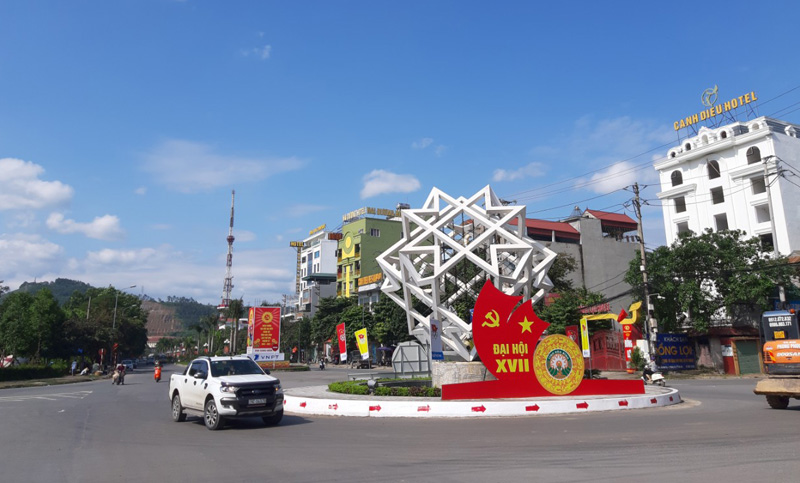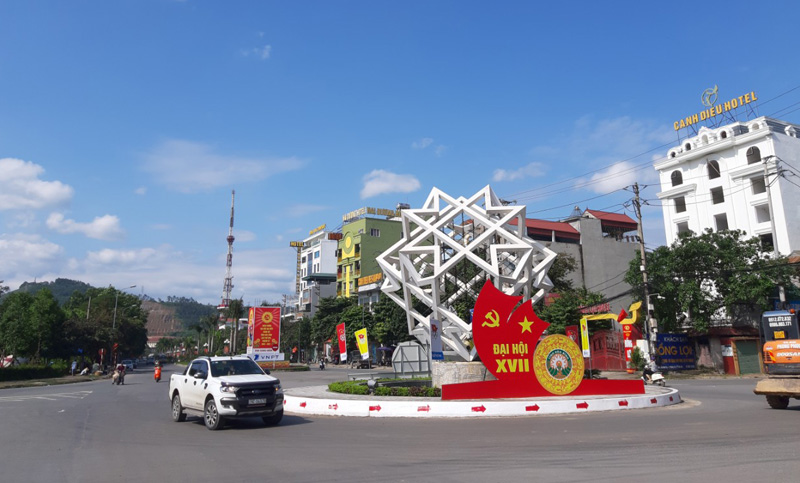
(HBO) - The urbanisation rate of Hoa Binh province has reached 28.69 percent so far, surpassing the target set at the Party Congress of the 2015-20 tenure. To further realise targets of the resolution at the 17th Congress for the 2020-2025 tenure, with a vision to 2025, the rate is expected to hit 38 percent.

Infrastructure in Hoa Binh city has been upgraded with
a view to turning it into a second-tier city.
The provincial Department of Construction has put
forth some tasks on the realisation of the province’s urbanisation rate by
2025, including a provincial urban development programme for the 2020-25, with
a vision to 2035 based on a planning of Hoa Binh province to 2050.
It also aims to upgrade Hoa Binh city, Luong Son
district, Mai Chau and Man Duc towns, among others.
Accordingly, the province needs to complete planning
for Hoa Binh city and districts to 2050 and the amendment of a joint plan on
the building of expanded urban areas stated in Resolution No.830. In the near
future, Hoa Binh city is due to set up new wards and carry out plans for
existing wards.
Other tasks include reviewing key investment in
technical infrastructure criteria and mobilising resources to upgrade the aforementioned
localities by 2025.
A number of solutions will be launched in a concerted
manner, focusing on urban planning quality, investment promotions, property
development, mechanism and policies, among others.
Local authorities also prioritise investment in urban
investment and arrange auctions on land use rights in a bid to raise fund for
urban development and transform agricultural land.
Relevant agencies have been asked to choose capable
units in devising quality plan for sustainable urban development, thereby
attracting investment to the sphere as well as the property market, and more./.
According to data from the Hoa Binh Provincial Party Committee, the industrial production index for the first six months of 2025 is estimated to have increased by 20% compared to the same period last year. This marks the highest year-on-year growth rate for this period since 2020.
In the first six months of 2025, Hoa Binh province’s export turnover was estimated at 1.145 billion USD, marking an 18.11% increase compared to the same period in 2024. Import turnover was estimated at $ 804 million, a 17.15% increase, which helped the province maintain a positive trade balance.
The lives of the ethnic minority farmers in Tan Lac district have gradually improved thanks to the new directions in agricultural production. This is a testament to the collective strength fostered through the professional associations and groups implemented by various levels of the district’s Farmers’ Union.
With the motto the "product quality comes first,” after nearly one year of establishment and operation, Muong village’s Clean Food Agricultural and Commercial Cooperative, located in Cau Hamlet, Hung Son Commune (Kim Boi district), has launched reputable, high-quality agricultural products to the market that are well-received by consumers. The products such as Muong village’s pork sausage, salt-cured chicken, and salt-cured pork hocks have gradually carved out a place in the market and they are on the path to obtaining the OCOP certification.
In the past, the phrase "bumper harvest, rock-bottom prices" was a familiar refrain for Vietnamese farmers engaged in fragmented, small-scale agriculture. But today, a new spirit is emerging across rural areas of Hoa Binh province - one of collaboration, organisation, and collective economic models that provide a stable foundation for production.
Maintaining growing area codes and packing facility codes in accordance with regulations is a mandatory requirement for agricultural products to be eligible for export. Recently, the Department of Agriculture and Environment of Hoa Binh province has intensified technical supervision of designated farming areas and packing facilities to safeguard the "green passport" that enables its products to access international markets.



